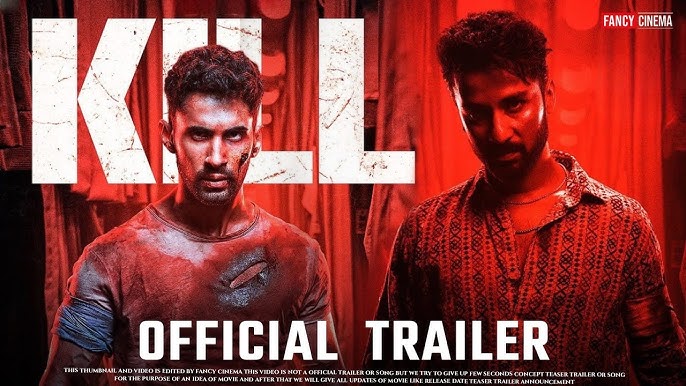Kill Movie: A Pulse-Racing Thriller That Will Leave You Breathless
Kill-Movie: A Heart-Pounding Cinematic Masterpiece | Unleash the Thrills with Kill Movie: A Must-Watch Blockbuster

The concept of violence has been a recurring theme in cinema for decades, captivating audiences with its intensity, drama, and often, its moral ambiguity. One subgenre that has consistently explored this theme is the “kill movie.” This genre delves into the act of killing, examining its motivations, consequences, and the psychological impact it can have on both the killer and the victim. In this comprehensive exploration, we will delve into the history, evolution, and key characteristics of the kill-movie, as well as analyze some of its most iconic examples.
The Evolution of the Kill-Movie
The kill movie has its roots in the classic Western films of the 19th and early 20th centuries, which often featured gunfights, shootouts, and violent confrontations. However, the genre truly came into its own in the mid-20th century with films like Alfred Hitchcock’s Psycho (1960) and Stanley Kubrick’s A Clockwork Orange (1971). These films pushed the boundaries of cinematic violence, exploring its psychological and moral implications in a way that had never been seen before.
In the decades that followed, the kill movie continued to evolve, incorporating elements of other genres such as horror, thriller, and crime drama. Films like The Silence of the Lambs (1991), Reservoir Dogs (1992), and Se7en (1995) further cemented the kill movie as a popular and influential subgenre.
Key Characteristics of the Kill-Movie
The kill movie is characterized by several key elements:
- Violence as a Central Theme: The act of killing is a central focus of the kill movie. It is often depicted in graphic detail, exploring the physical and psychological consequences of violence.
- Moral Ambiguity: Kill movies often explore moral ambiguity, questioning the nature of good and evil. Characters may be forced to make difficult choices that involve violence, and the consequences of their actions may be far-reaching.
- Psychological Exploration: Many kill movies delve into the psychology of the killer, exploring their motivations, fears, and desires. This can lead to complex and multifaceted characters who are both sympathetic and disturbing.
- Social Commentary: Kill movies can be used as a platform for social commentary, exploring issues such as violence, crime, and the justice system. They can raise important questions about the causes and consequences of violence in society.
Iconic Kill Movies
There are countless iconic kill movies that have left a lasting impact on cinema. Here are a few examples:
- Psycho (1960): Alfred Hitchcock’s classic thriller is a landmark in the history of the kill movie. The shower scene, in particular, is one of the most iconic moments in cinema history and has been referenced countless times.
- A Clockwork Orange (1971): Stanley Kubrick’s controversial film explores the themes of violence, free will, and conditioning. The ultra-violent scenes, combined with the disturbingly charismatic performance by Malcolm McDowell, make A Clockwork Orange a must-see for fans of the kill movie.
- The Silence of the Lambs (1991): This psychological thriller features a chilling performance by Anthony Hopkins as Hannibal Lecter, a brilliant but cannibalistic serial killer. The film explores the themes of madness, obsession, and the boundaries of human nature.
- Reservoir Dogs (1992): Quentin Tarantino’s debut feature film is a stylish and violent crime drama that features a group of thieves who are forced to turn on each other after a heist goes wrong. The film’s graphic violence and memorable dialogue have made it a cult classic.
- Se7en (1995): This gritty crime thriller stars Brad Pitt and Morgan Freeman as two detectives investigating a series of gruesome murders. The film’s dark atmosphere, complex plot, and shocking ending have made it a critical and commercial success.
The Impact of Kill Movies
The kill movie has had a significant impact on popular culture. It has influenced other genres, such as horror and thriller, and has spawned countless imitations and parodies. However, the genre has also been the subject of criticism, with some arguing that it glorifies violence and desensitizes audiences.
Despite the controversy, the kill-movie remains a popular and influential subgenre. Its ability to explore complex themes, create memorable characters, and provoke thought-provoking discussions makes it a valuable contribution to the world of cinema.
The Ethics of Violence in Film
One of the most controversial aspects of the kill-movie is its depiction of violence. Critics argue that such films can glorify violence and desensitize audiences to its consequences. They contend that the graphic portrayal of killing can have a negative impact on society, particularly on young and impressionable viewers.
However, proponents of the kill movie argue that violence is a natural part of the human experience and that films can provide a cathartic release for viewers. They contend that by exploring the consequences of violence, kill movies can actually serve as a warning against its destructive power.
The Role of Censorship
The issue of censorship has been a recurring theme in the debate over the kill-movie. Some argue that certain films should be censored or restricted to adult audiences due to their violent content. Others contend that censorship infringes on freedom of expression and that viewers should be free to decide what they want to watch.
The debate over censorship has become particularly relevant in recent years, as the rise of streaming services has made it easier for viewers to access a wide range of content, including films with explicit violence.
The Future of the Kill Movie
As technology continues to evolve, it is likely that the kill movie will continue to be a popular and controversial subgenre. New technologies, such as virtual reality, may offer new and immersive ways to experience violence on screen.
However, it is also possible that the public’s attitude towards violence in film may change over time. As society becomes more aware of the consequences of violence, there may be a growing demand for films that explore the human cost of violence in a more nuanced and thought-provoking way.
Conclusion
The kill movie is a complex and controversial subgenre that has captured the imagination of audiences for decades. Its exploration of violence, morality, and psychology has made it a subject of both fascination and debate. As the genre continues to evolve, it will be interesting to see how it adapts to changing cultural and technological landscapes.

